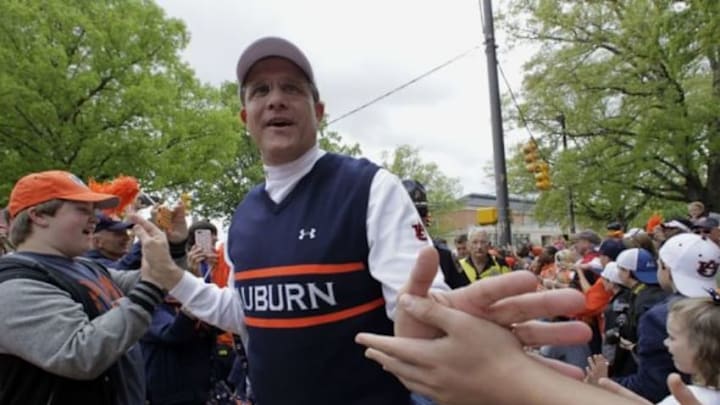One of the biggest topics in college football over the past two seasons has been the ever-increasing pace of play. Bret Bielema and others have been very vocal about slowing the game down in the name of safety, while others like Auburn’s Gus Malzahn see no need to slow down.
More from College Football
- Jim Harbaugh facing 4-game suspension over NCAA violations
- College football neutral site games in 2023: Full list
- College GameDay announces surprise Week 1 destination
- College football analyst warns Oklahoma that Texas is doing better prep for SEC
- College Football Playoff national championship game locations for 2024, 2025 and beyond
The line of thinking for Bielema and the crew is that upping the tempo of the game actually can increase the chances for injury and major injury—more so than a slower tempo to the game.
Bielema argued that point earlier this year, stating, “If one of those players in on the field for more, and I have no timeouts, I have no way to stop the game. And he raises his hand to stop the game, and I can’t do it. What am I supposed to do? What are we supposed to do when we have a player who tells us he’s injured?”
He also went on to mention “death certificates” as proof that playing uptempo offenses led to injuries, wrongfully citing the death of California Golden Bear Ted Agu from the offseason.
However, it appears recent data may actually back up Malzahn and those who wish to up the tempo of college football offenses, and not Bielema.
According to CFBMatrix.com’s Dave Bartoo, the two conferences with the highest offensive and defensive players per game actually had the fewest starts lost to injury in 2012.
The report went on to track the numbers from 2009 to 2012 and in that time frame the Big 12 conference led in pace of play, but it also had the fewest starts lost to injury on both offense and defense and the lowest injury rate per play on offense and defense.
So, as Bielema and others who like to play a more traditional style of offense and defense continue to have to adjust, it appears the data doesn’t support the claim that it’s all about “safety” of players.
